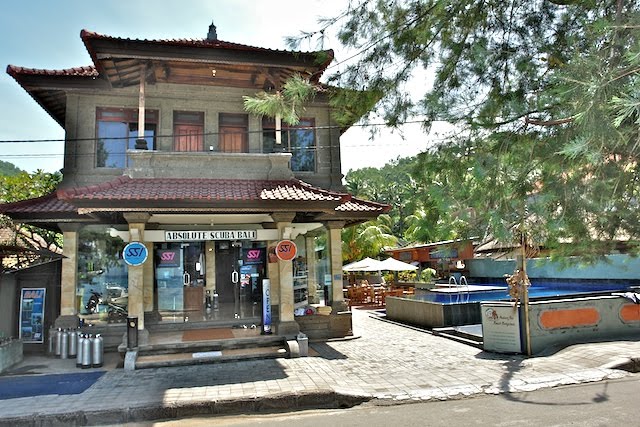One of the most recognised and loved fish in the Bali oceans is the Anenomefish, also called the Clownfish, or as it is mostly referred to, "Nemo".
There


 are 28 recognised species of clownfish, and come in red, orange, yellow or black colours, many show white bars or patches.
are 28 recognised species of clownfish, and come in red, orange, yellow or black colours, many show white bars or patches.
The clownfish feeds on small invertebrates which otherwise potentially could harm the sea anemone that is their home, and the fecal matter from the clownfish provides nutrients to the sea anemone. Clownfish are omnivorous, they eat live food such as algae, plankton, mollusks, and crustacea.
Clownfish and sea anemones have a symbiotic, mutualistic relationship; each providing a number of things to benefit the other. The sea anemone protects the clownfish from predators, as well as providing food through the scraps left from the anemone's meals. In return, the clownfish defends the anemone from its predators, and cleans it from parasites.The anemone also potentially picks up nutrients from the Clownfish's excrement, and functions as a safe nest site.It has been theorized that the clownfish use their bright colouring to lure small fish to the anemone,and that the activity of the clownfish results in greater water circulation around the sea anemone.
In a group of clownfish, there is a strict dominance hierarchy. The largest and most aggressive female is found at the top. Only two clownfish, a male and a female, in a group reproduce through external fertilisation. Clownfish are sequential hermaphrodites, meaning that they develop into males first, and when they mature, they become females. If the female clownfish is removed from the group, such as by death, one of the largest and most dominant males will become a female. The remaining males will move up a rank in the hierarchy.
Clownfish lay eggs on any flat surface close to their host anemones. In the wild, clownfish spawn around the time of the full moon. Depending on the species, clownfish can lay hundreds or thousands of eggs. The male parent guards the eggs until they hatch about 6 to 10 days later, typically 2 hours after dusk.Clownfish and certain damselfish are the only species of fishes that can avoid the potent poison of a sea anemone. There are several theories about how they can survive the sea anemone poison:
- The mucus coating of the fish may be based on sugars rather than proteins. This would mean that anemones fail to recognize the fish as a potential food source and do not fire their nematocysts, or sting organelles.
- The coevolution of certain species of clownfish with specific anemone host species and may have acquired an immunity to the nematocysts and toxins of their host anemone.
All divers love Nemo!




